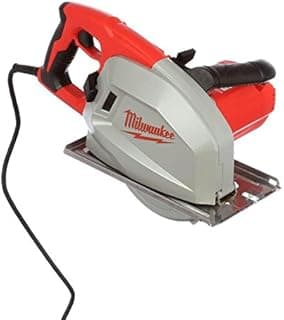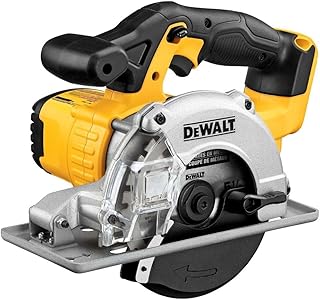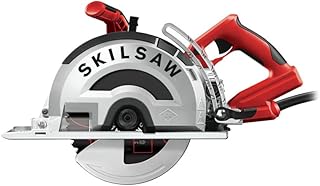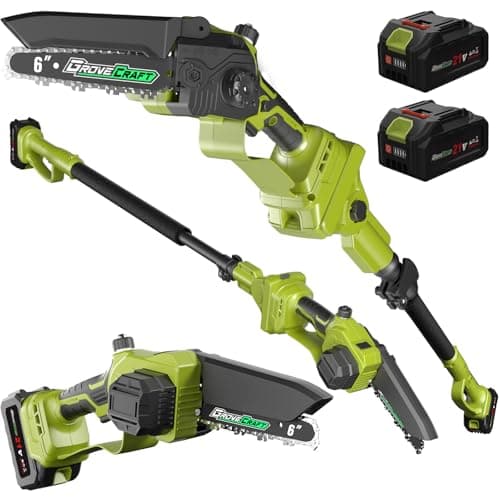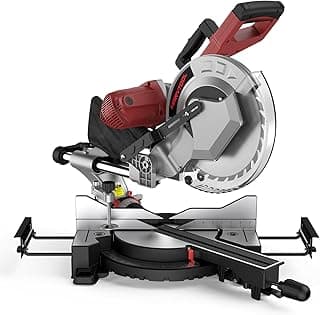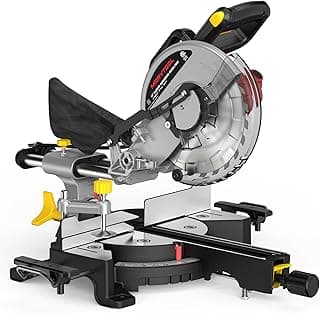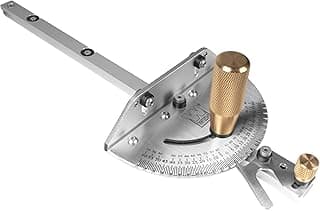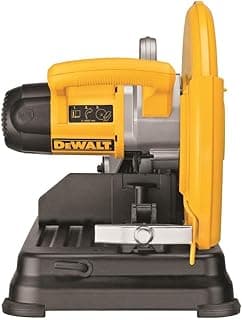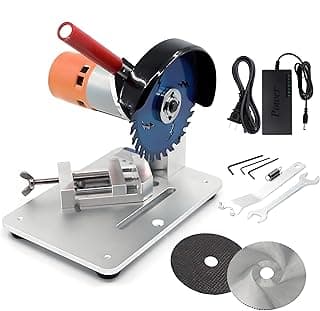Cutting metal doesn’t have to be a daunting task. But here’s the thing: not all saws are built the same. Some will struggle with precision, others with speed, and some may even wear out prematurely. That’s where the best metal cutting saw comes in. Stick around, because in this review, we’re going to dive deep into the features that matter most—accuracy, power, blade type, and versatility. We’ll compare top models, reveal which saws handle different types of metal effortlessly, and explain what makes one saw outperform another. By the end of this article, you’ll know exactly which saw is worth your investment. Ready to cut through confusion and get straight to the tools that truly excel? Let’s jump right in.
Top Picks
Best Power: Milwaukee 6370-21 13 Amp 8" Metal Cutting Circular Saw
The Milwaukee corded electric metal cutting saw stands out with its powerful 2990-watt motor and robust 8-inch cermet blade, designed for precise metal cutting. Its rectangular blade with 24 teeth ensures clean, efficient cuts, while the ergonomic rubber/plastic handle provides better control during extended use. Measuring 23.38 x 15.44 x 13 inches and weighing 27.4 pounds, it offers stability but may feel heavy for frequent repositioning. Built to meet general safety and quality standards, it combines high performance with reliable durability. Customers appreciate its cutting power and precision, though some note the weight can make maneuvering slightly challenging during long projects. Overall, it delivers dependable performance for professional or heavy-duty metal work.
Best Cordless: DEWALT 20V MAX XR 7-1/4 in. Metal Cutting Circular Saw
The DEWALT 20V Max metal cutting circular saw is designed for high-performance, cordless convenience. Its brushless motor delivers up to 1,400 mwo of power, enabling users to cut through up to 214 20-gauge steel studs or 105 feet of corrugated decking on a single charge. The saw offers a 2-5/8 inch depth of cut, covering a variety of metal cutting applications. The integrated chip collector keeps the workspace cleaner, while the electronic brake stops the blade in under a second for enhanced safety. Tool Connect+ technology allows tracking and monitoring through the Dewalt Site Manager app, providing data on tool location, usage, and safety. Users appreciate its portability and strong cutting power, though the limited cutting depth may restrict certain applications. Overall, it’s a reliable cordless solution for professional metalwork.
Best Portability: SKIL 12 In. Metal Dry Cut Saw with Diablo Blade
The Skil corded electric metal cutting saw offers impressive portability without sacrificing cutting performance. Its 4-1/2 inch cutting capacity allows it to handle shapes and sizes typically managed by larger 14-inch saws, making it ideal for tight job-site spaces. The included Diablo cermet-tipped blade delivers three times the life of standard carbide-tipped blades, while cutting faster than abrasive chop saws with minimal sparks and burrs. The die-cast aluminum body and protective guards keep the saw lightweight, and the soft-start motor reduces strain, enhancing smooth operation and durability. Users value its compact size and efficiency for on-site metal cutting, though the smaller cutting capacity may limit larger projects. Overall, it is a versatile, portable solution for professional and DIY users alike.
FAQs
Which saw is best for cutting metal?
When selecting a saw for metal, you need one designed specifically for the material. A metal cutting saw can be a chop saw, miter saw, or a circular saw with a proper blade. Key features to consider include:
-
Motor power: Higher amperage motors allow smoother and faster cuts through thicker metals.
-
Blade type: Look for blades made from high-speed steel (HSS), carbide-tipped, or abrasive discs, depending on the metal type.
-
Adjustability: Angle adjustments and sliding mechanisms help handle different cuts and thicknesses.
-
Durability: Metal cutting generates heat; a robust saw with heat-resistant components lasts longer.
For most users, a dedicated chop saw with a carbide-tipped blade is ideal for straight cuts, while a circular saw with a metal-specific blade is versatile for detailed or irregular cuts.
Is 18 or 24 TPI better for metal?
TPI stands for teeth per inch, and the choice depends on the type and thickness of metal.
-
18 TPI: Coarser teeth, faster cutting, better for thicker metals. Produces rougher edges but removes material quickly.
-
24 TPI: Finer teeth, slower but smoother cuts. Ideal for thinner sheets or when a precise edge is important.
In general, use a higher TPI for thin metals to prevent tearing and a lower TPI for thicker metals to reduce blade stress and speed up cutting. Always match the blade TPI to the metal thickness and hardness.
What's best to cut through metal?
The best tool depends on metal type, thickness, and precision needed:
-
Abrasive cut-off saws: Great for stainless steel, aluminum, or thick metal rods.
-
Carbide-tipped blades on chop or miter saws: Excellent for repeated straight cuts with precision.
-
Hacksaws or band saws: Useful for thinner metal sheets or custom shapes.
Always prioritize cooling and lubrication, especially for harder metals, to prolong blade life and achieve clean cuts.
Do you need a special circular saw to cut metal?
Yes, standard wood-cutting circular saws are not suitable for metal. You need:
-
Metal-specific blades: Carbide-tipped, HSS, or abrasive discs designed for metal.
-
Variable speed control: Helps prevent overheating and ensures smoother cuts.
-
Proper safety features: Guards and anti-kickback mechanisms are critical due to sparks and debris.
Using a metal-ready circular saw ensures efficiency, safety, and longevity of both the tool and blade.
Final Thoughts
Choosing the best metal cutting saw requires careful consideration of motor power, blade type, TPI, and intended use. Whether you are cutting thin sheets, thick pipes, or heavy structural metal, the right saw dramatically improves precision, speed, and safety. By understanding the differences between blade types and TPI, and ensuring your saw is designed for metal, you can confidently tackle any project. Invest wisely, and your metal cutting tasks will be faster, cleaner, and far less frustrating.

